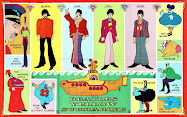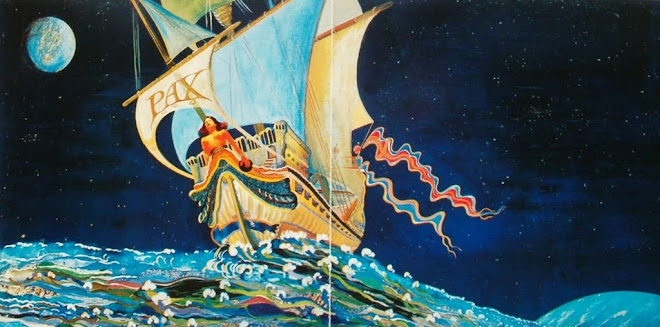Throwback Products We Love: Vinyl Records
By Diane Bullock Nov 30, 2010
The LP record. Those clunky, 12-inch discs of vinyl have inspired a god-like worship by audiophiles -- from John Cusak’s character in High Fidelity who organized his music collection not alphabetically, not chronologically, but autobiographically to Stanley Goodspeed in The Rock who shelled out $600 for a Beatles LP, rather than a $13 CD because they “sound better” to the characterization of Lester Bangs in Almost Famous, whose radio station studio and bedroom/home office were clogged, floor to ceiling, with the last ‘real’ records before the impending “death rattle, the last gasp, the last grope” of rock and roll music.
Four decades before Cameron Crowe had Bangs putting a nail in the coffin his record acquiring habit, RCA Victor was introducing the very first commercial vinyl record to the market. But the listening medium didn’t catch on until with the public until Columbia Records pioneered cost effective playback equipment and unveiled the 12-inch Long Play 33 1/3 RPM microgroove polyvinyl chloride record at a New York press conference in 1948.
The vinyl record would be the dominant mass market music medium for the next three-plus decades until the 1980s when cassette tapes started filling the shelves. But vinyl’s major popularity plunge came courtesy of Sony (SNE) and Philips’ (PHG) digitally recorded compact disc which proved far more portable, far less vulnerable to damage and, according to some, provided better fidelity. Vinyl records were officially ushered out of the marketplace by 1991 when the vast majority of copies of U2’s Achtung Baby were purchased on CD and Tower Records stores were holding final clearance sales on all vinyl merchandise, which comprised only 15 percent of total sales.
With the relatively recent advent of the Internet, the MP3 and the iPod (AAPL), the empire of the CD is experiencing a gradual overthrow. According to Billboard's senior chart manager and analyst Keith Caulfield, 44 million digital albums were purchased by July 2010, up four million from the previous year, while CD sales dropped by 33 million to 114 million. Online stores now predominate the retail music landscape with Apple’s iTunes store taking the biggest bite at 70% of the digital music market share. June 2009 saw an end of the brick and mortar record store era when the last Virgin Megastore chain in North America closed its doors.
Of course, not all of America’s music stores have turned their leases over to Pinkberry. And of the proud few that remain, an unexpected sales trend is in the works. Although common logic and practicality dictate that vinyl records should have gone the way of fellow technological dinosaurs the floppy disc, the beeper and its CD successor, the LP has managed to cement its place in the niche music consumer’s heart and stereo shelf.
While the vinyl record will never again be a heavyweight contender in the music retail industry, currently comprising only one percent of total album sales, it certainly deserves ‘comeback kid’ status. According to Nielsen SoundScan, sales of vinyl records actually increased by nearly one million units from 1.9 million in 2008 to 2.8 million in 2009 -- and those figures exclude independent shops and concert sales. (In 1980, at the height of vinyl's popularity, 322 million LPs were sold.) We’re seeing a resurgence of vinyl catalog reissues as well as a growing roster of artists firing up the vinyl presses for new releases. Some artists like Green Day are doing both. Last year the punk band re-released every record in their entire catalog on LP and then pressed their newest album, 21st Century Breakdown, on vinyl for its initial release. The Rolling Stones is also catering to the LP collector with a new all-vinyl limited edition box set of remastered recordings from 1964-1969, which will set fans back $265.
As long as there remains a market for vinyl records, a demand will coexist for the equipment on which to play them. Electronics companies like Sony and Pioneer hawk state-of-the-art automatic turntables while recreations of turn-of-the-century wood-accented cabinet models complete with modern digital conversion capability are the business of companies like Crosley. Even Pottery Barn (WSM) has gotten in on the vinyl action with a classic leather bound portable suitcase player that plays and digitizes 33, 45 and 78 rpm records into audio files.
The lasting appeal of the vinyl record extends beyond retro novelty item hipstertude into 100 percent uncompromising sound snobbery. There is a superior race of audio purists who insist that the most cleanly mastered compact disc could never rival the hiss, crackle and pop of its spiral-grooved counterpart. They’ll argue that there’s nothing like physically flipping through card jackets in record store bins, admiring the album art, removing the record from its paper sleeve and gingerly cradling its edges in their palms.
Besides, Stanley Goodspeed wouldn’t exactly get to hear "turn me on, dead man" on "Revolution 9" by hitting the rewind button on his iPod.
http://www.minyanville.com/special-features/articles/vinyl-records-turntable-record-player-gift/11/30/2010/id/31349





.jpg)


